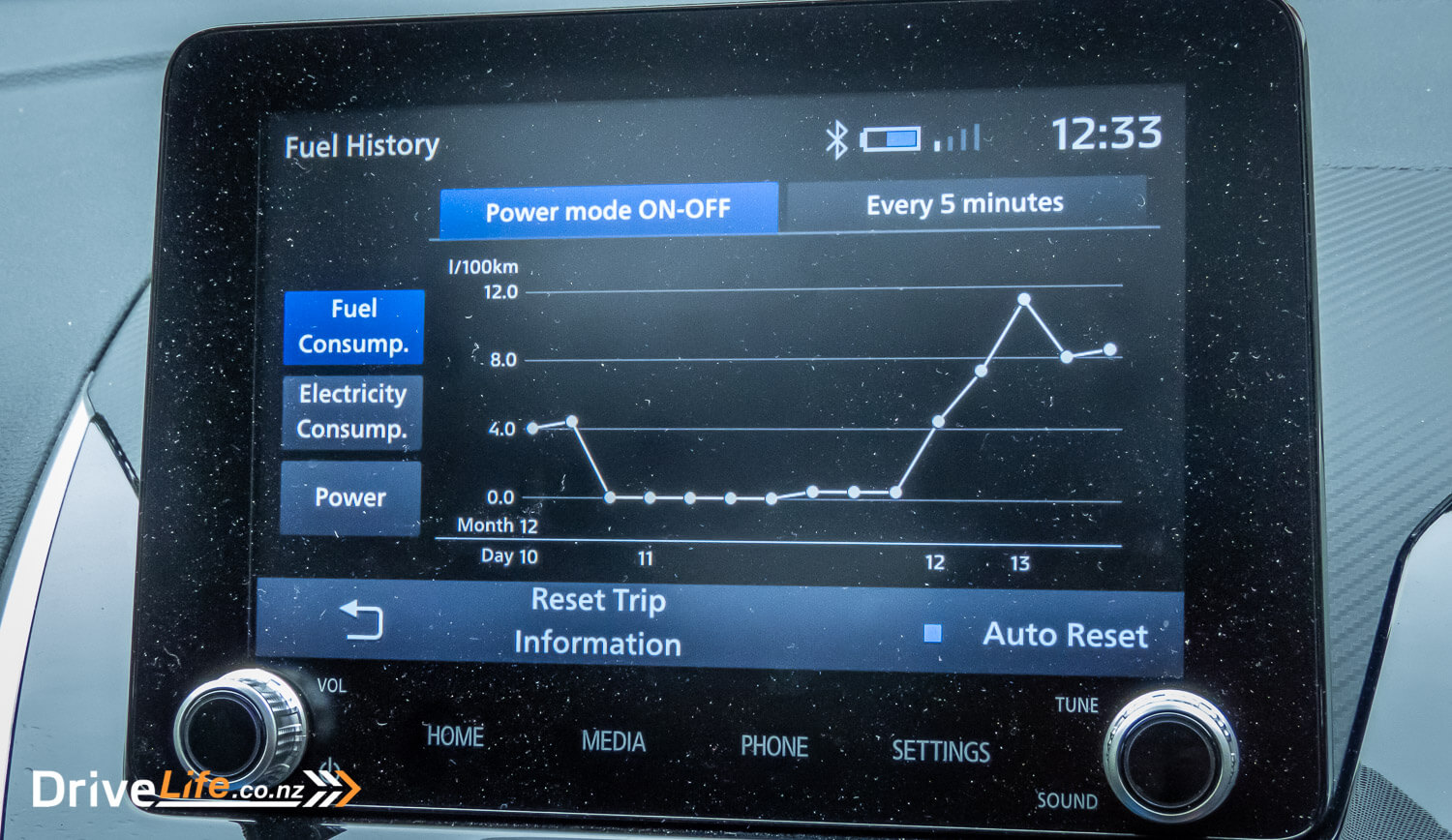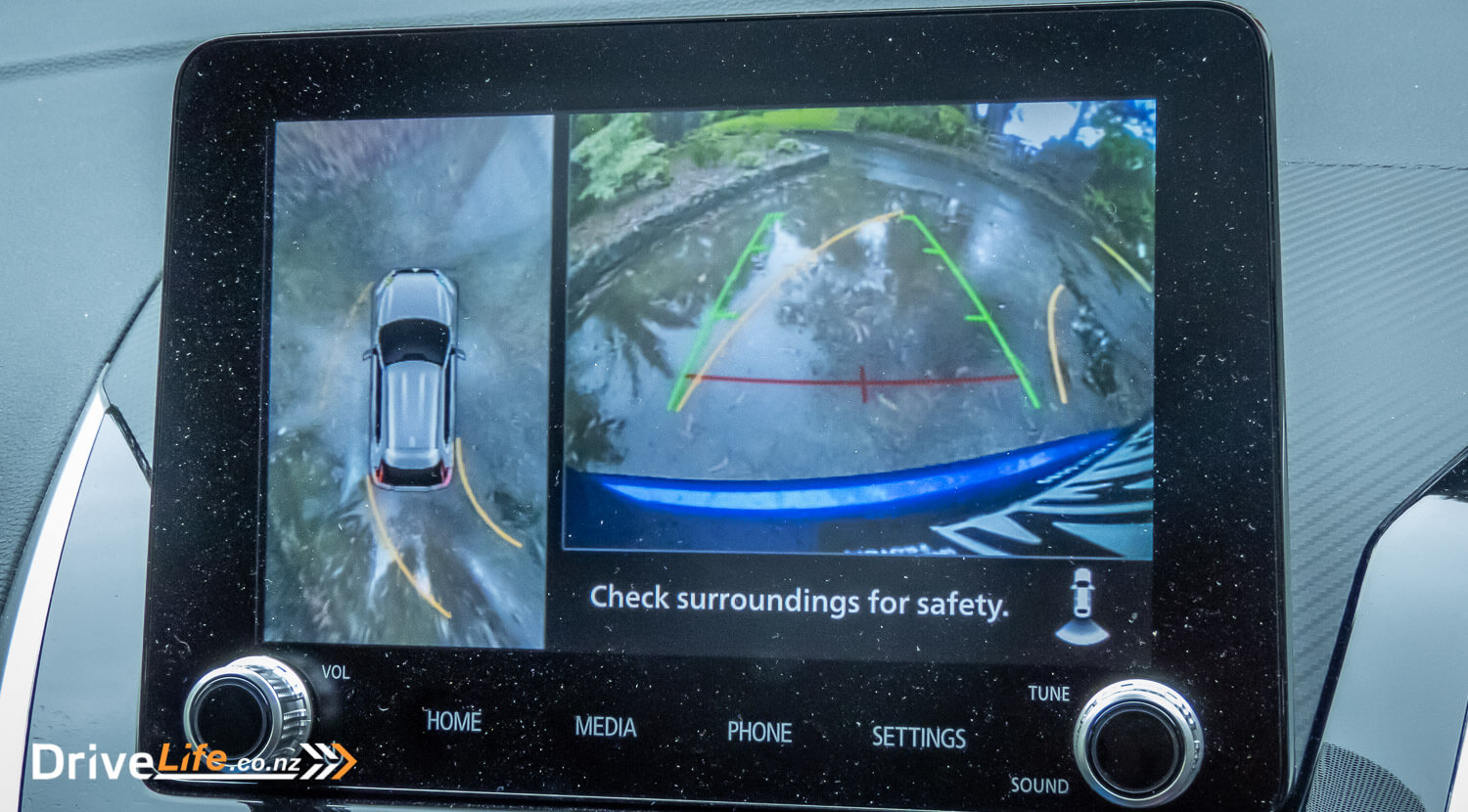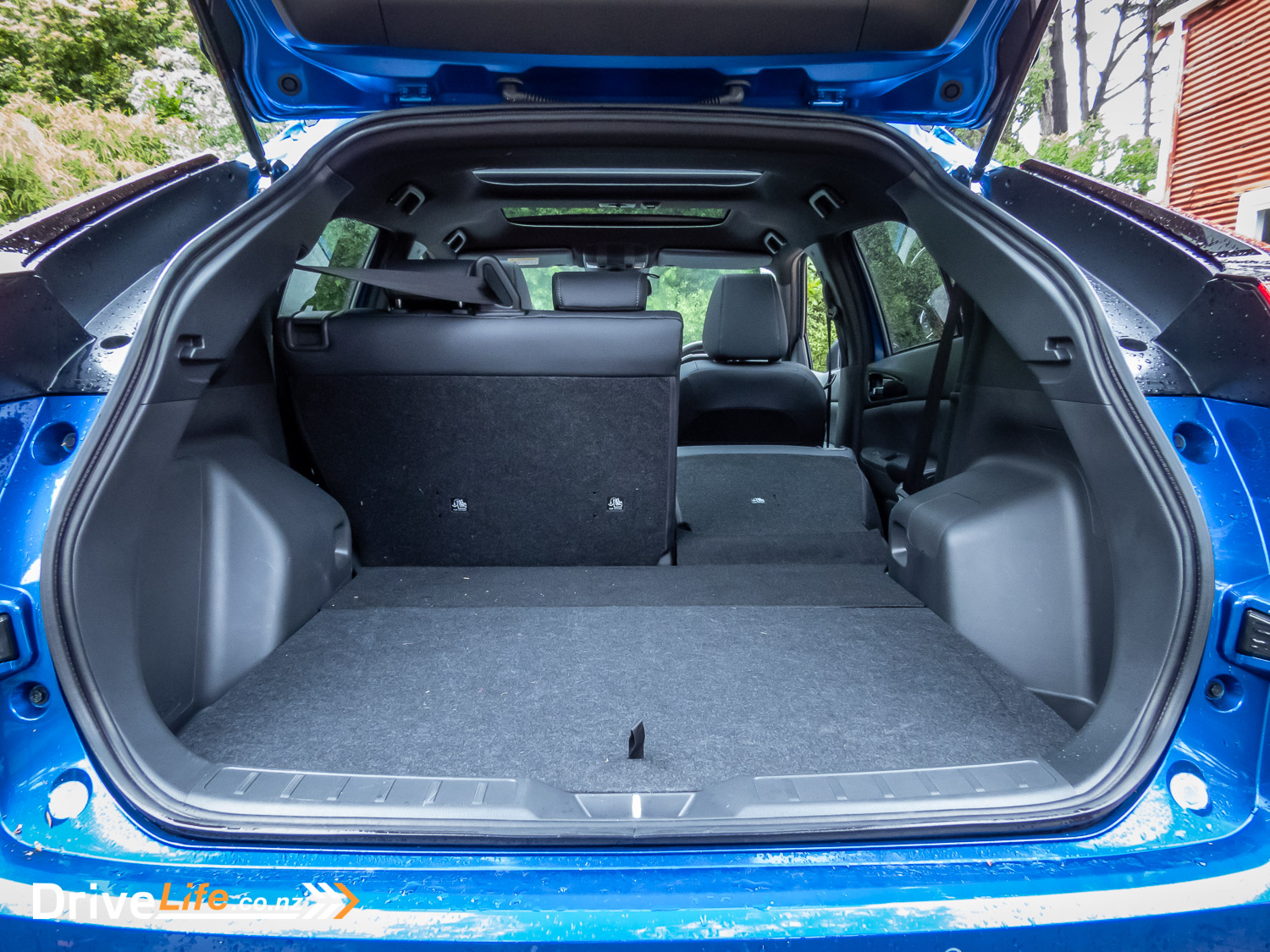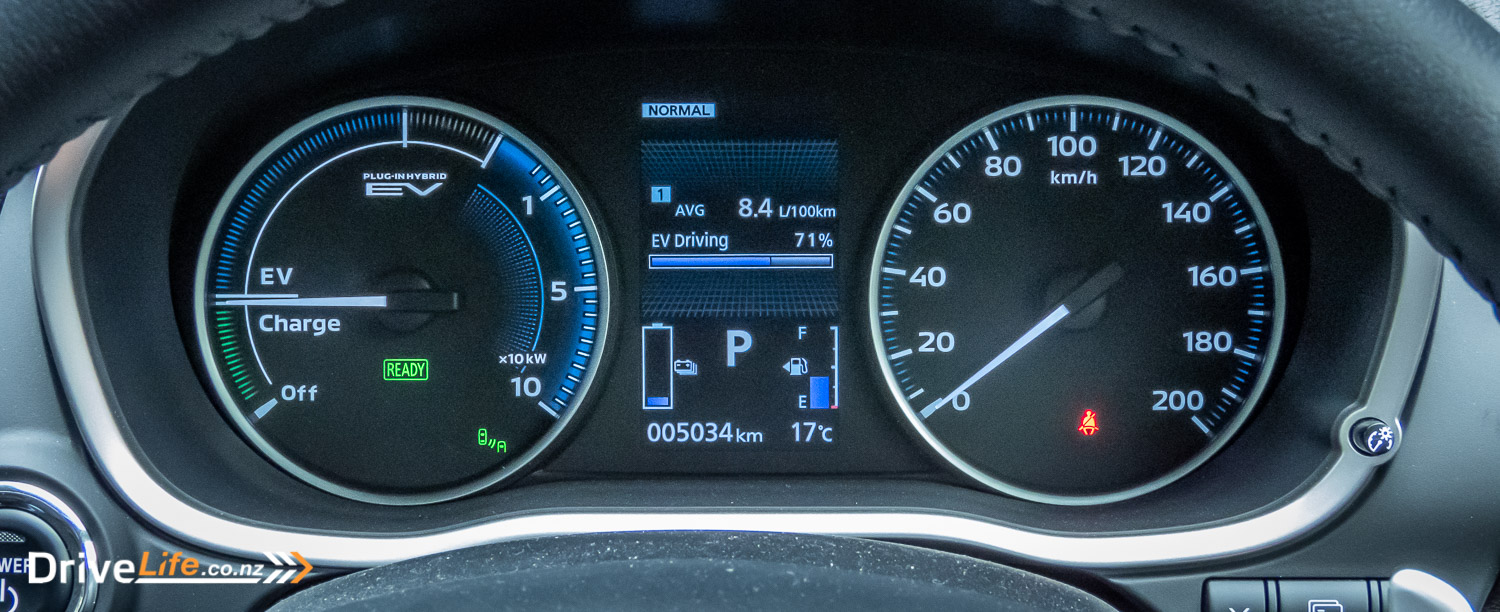In the past five years, the discussion surrounding electric propulsion is growing louder and louder.
As reviewers, we have had the good fortune to test some truly competent electric vehicles, but as good as these vehicles can be, we know that EV’s still have their compromises and a fair share of unanswered, ‘what-ifs’ for the product lifecycle.
For that reason, we’ve historically advocated that Plug-in Hybrid Electric Vehicles (PHEV) are an excellent intermediate step between the petrol-power and full electrification. Mitsubishi is no stranger to the PHEV market, making an early move into the segment with the Mitsubishi Outlander PHEV in 2013.
Jump forward to 2022, Mitsubishi has now shoehorned the same PHEV technology into the Eclipse Cross, the brand’s smaller, yet dimensionally more appealing, crossover. On paper, this is a promising formula.
Could the Eclipse Cross PHEV be the best one-car fits all solution for New Zealanders? Mitsubishi gave us the keys to find out.

What We Like and Dislike About The 2022 Mitsubishi Eclipse Cross
| What we like | What we don’t like |
| Frugal Powertrain Excellent optimisation of EV motors Spacious Interior Comfortable front seats Excellent ride quality Value | Dated Interior Dated Infotainment Irritating Auto Hi-beam settings Oversensitive Forward Collision Mitigation Thirsty without its batteries |

What’s In The Mitsubishi Eclipse Cross PHEV Range?
There are six different models available in the Mitsubishi Eclipse Cross line-up. Four of these are solely petrol-powered, and two are Plug-In Hybrids.
Each Eclipse Cross model is priced below:
| Model | Type | Price* |
| Eclipse Cross XLS 2WD | Petrol | $35,990 |
| Eclipse Cross VRX 2WD | Petrol | $41,990 |
| Eclipse Cross XLS AWD | Petrol | $38,990 |
| Eclipse Cross VRX AWD | Petrol | $44,990 |
| Eclipse Cross PHEV XLS AWD | Plug-In Hybrid | $49,990* |
| Eclipse Cross PHEV VRX AWD | Plug-In Hybrid | $57,990* |
Petrol Eclipse Cross models are powered by a 1.5-litre 4-cylinder turbo engine, producing 112kW of power and 254Nm of torque. As per the table, you also have a choice of 2-wheel drive or all-wheel drive options.
The Eclipse Cross PHEV is offered as a four-wheel drive by default, with the combustion engine powering the front wheels, and the electric motors driving the rear. The combustion engine is a 2.4L naturally aspirated four-cylinder, paired with two electric permanent magnet synchronous motors. The total system produces 94kW of power and 199Nm of torque.
There are two trim levels available across the range. XLS is the entry level trim, while the VRX is considered top of the range.

2021 Mitsubishi Eclipse Cross PHEV Standard Equipment Highlights
- 18’’ Alloys
- 8’’ touchscreen infotainment w Bluetooth (Apple Carplay and Android Auto compatible)
- 7 Airbags
- Reversing Camera
- 6-speaker audio system
- Cruise Control
- Heated seats (front)
- Powered drivers seat
- Manual passengers seat
- Cloth and Synthetic Leather Seats
- 2x ISO-FIX
- Powered and heated Door Mirrors
- LED Headlights with day-time running lights
- LED Tail Lights
- Integrated roof rails
- Privacy glass
- Rain Sensing Wipers
- Dual Zone Climate Control
- Push Button Start
- Keyless Entry
- Auto Headlamps
- Adjustable Speed Limiter
- Blind Spot Warning
- Forward Collision Mitigation
- Hill Start Assist
- Auto High Beam
- Lane Departure Warning
- Lane Change Assist
- Rear Cross Traffic Alert
- Mitsubishi Remote Control Smartphone Application
The VRX model adds:
- Heated leather seats (front and rear)
- Powered Passenger seat
- Auto-dimming rear-view mirror
- Adaptive Cruise Control
- Front and rear parking sensors
- Multi Around View Monitor (side and top-down cameras)
- Heads up display
- Dual Sunroof
The Eclipse Cross range offers seven different colour options, these are:
- Amethyst Black (Black)
- Red Diamond (Red)
- Electric Blue (Blue)
- Mocha (Brown)
- Titanium (Deep Grey)
- Sterling Silver (Silver)
- White Diamond (White – think refrigerator)
- Cardrona (White – think Vanilla ice-cream)
For more details on the Mitsubishi Eclipse Cross, visit the Mitsubishi New Zealand website.


How Does The 2022 Mitsubishi Eclipse Cross PHEV Compare To Its Competition?
There aren’t many natural competitors for the Mitsubishi Eclipse Cross PHEV. Below are some of your options:
| Make/Model | Engine | Power/Torque kW/Nm | Seats | Fuel L/100km | Boot Space, litres | Price |
| Volvo XC40 Recharge PHEV | 1.5-litre 3-cylinder turbo hybrid | 192/425 | 5 | 2.2 | 452 | $85,990 |
| Ford Escape PHEV | 2.5-litre 4-cylinder hybrid | 167/NA | 5 | 1.5 | 517 | $60,900 |
| Kia Niro LX Plus PHEV | 1.6-litre 4-cylinder turbo hybrid | 104/265 | 5 | 1.3 | 324 | $57,990 |
| Mitsubishi Eclipse Cross PHEV VRX | 2.4-litre 4-cylinder hybrid | 94/199 | 5 | 1.9 | 359 | $57,990 |
| Toyota RAV4 Limited Hybrid (HEV) | 2.4-litre 4-cylinder hybrid | 131/221 | 5 | 4.8 | 542 | $56,990 |
| MG HS EV Plus (PHEV) | 1.5-litre 4-cylinder turbo hybrid | 189/370 | 5 | 1.7 | 451 | $54,990 |

First Impressions of the 2022 Mitsubishi Eclipse Cross VRX PHEV
How do you tell the Eclipse Cross PHEV apart from the petrol-driven Eclipse Cross? Err, you can’t.
Aside from a different set of alloys, and few oversized ‘EV’ badges proudly emblazoned across the body, there’s little telling the two models apart. This is a good thing in my eyes; whether the car is an EV, a PHEV, petrol-powered, or whichever, they shouldn’t all need alternative styling to tell you what’s underneath.
As for how the Eclipse Cross looks, it’s heavily stylised with plenty of sharp edges, flanks and body sculpting. Yet, despite somewhat fussy styling, none of it is unpleasant. I also appreciate that Mitsubishi had the sense to ditch that silly rear-light which intersected the rear windshield on the previous generation Eclipse Cross.
Altogether, the Eclipse Cross styling is unique, which is welcome in a segment where vehicles sometimes struggle to differentiate themselves.

What’s The Interior Like In The 2022 Mitsubishi Eclipse Cross VRX PHEV?
Similar to its exterior styling, the interior of the Eclipse Cross PHEV is nearly identical to its petrol-powered siblings. We reviewed the petrol Eclipse Cross VRX earlier in 2021.
Our earlier opinion of the Eclipse Cross’ interior was that it seems slightly dated, in an era where interiors are becoming increasingly high-tech. Even though it’s not the swishest thing to look at from a modernity viewpoint, it’s undeniably functional and easy to understand.
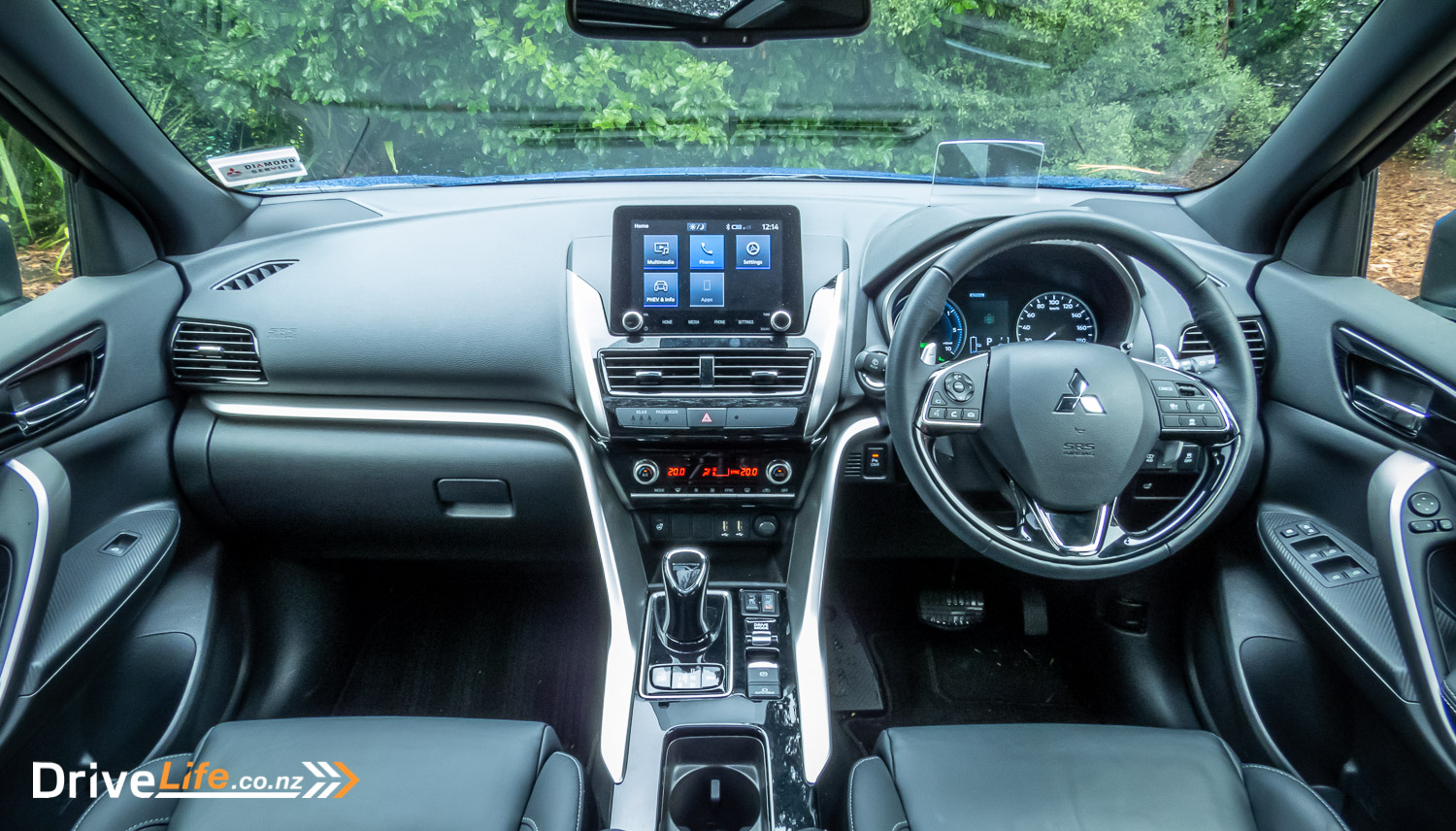
Aside from the infotainment screen, there’s still plenty of physical buttons for the climate controls and many other accessories. Personally, I appreciate this decision, as too many manufacturers are quick to digitise accessory controls for aesthetic purposes, only making them difficult to use in the process.
From a useability perspective, there was little to fault with the Eclipse Cross. My only gripe would be with the rogue placement of a few of these buttons. For example, the button for the heated steering wheel is located near the base of the centre console next to the USB ports, even though there are blank switches on the steering wheel. There are also a few more rogue buttons hiding in less-than intuitive places too.

Turning our attention to materials, there’s plenty of contrasting trim pieces to make the Eclipse Cross visually interesting. This includes some silver highlights, gloss black plastics on the centre console, door handle surrounds and steering wheel, and carbon fibre wrap for the door switch fascias and behind the infotainment unit. It should be noted that black plastic tends to scuff easily and leave plenty of fingerprints, and considering where Mitsubishi has put in some of these materials, I’m not so sure it’ll stand-up well over time. I also dislike fake carbon fibre wrap – I’ll give a pass in certain vehicles, but not in a family crossover.
Despite these material choices, I cannot fault the build quality of the Eclipse Cross. Even if the materials weather on the surface, their structure should stand up well over time.

Sitting in the centre of the dashboard is an 8’’ infotainment screen. The system does not have the flashiest user interface nor the best resolution, but much like the rest of the interior, the focus appears to be on functionality. The interface is easy to use and understand, and doesn’t noticeably lag between menus. The only lag I encountered was when using Android Auto. Couldn’t verify the same for you Apple folks, unfortunately.
Our VRX model also came with Mitsubishi’s Multi-Around View Monitor, which gives the Eclipse Cross a series of nifty cameras, allowing side-views and top-down views of the vehicle. Press the little camera button on the steering wheel (which looks a bit like a tea-cup), and you’ll have them pop-up on the infotainment screen. These cameras are very useful, even if the on-screen resolution is only average.
There’s also a heads-up display atop the dash, which is projected onto a piece of plastic that rises up from the dash. Most competitors have moved to projecting the image directly onto the windshield, which does knock a point off the Mitsi’s score card. Also, based on where the plastic is mounted, I personally found it tricky to adjust it to where I wanted it.
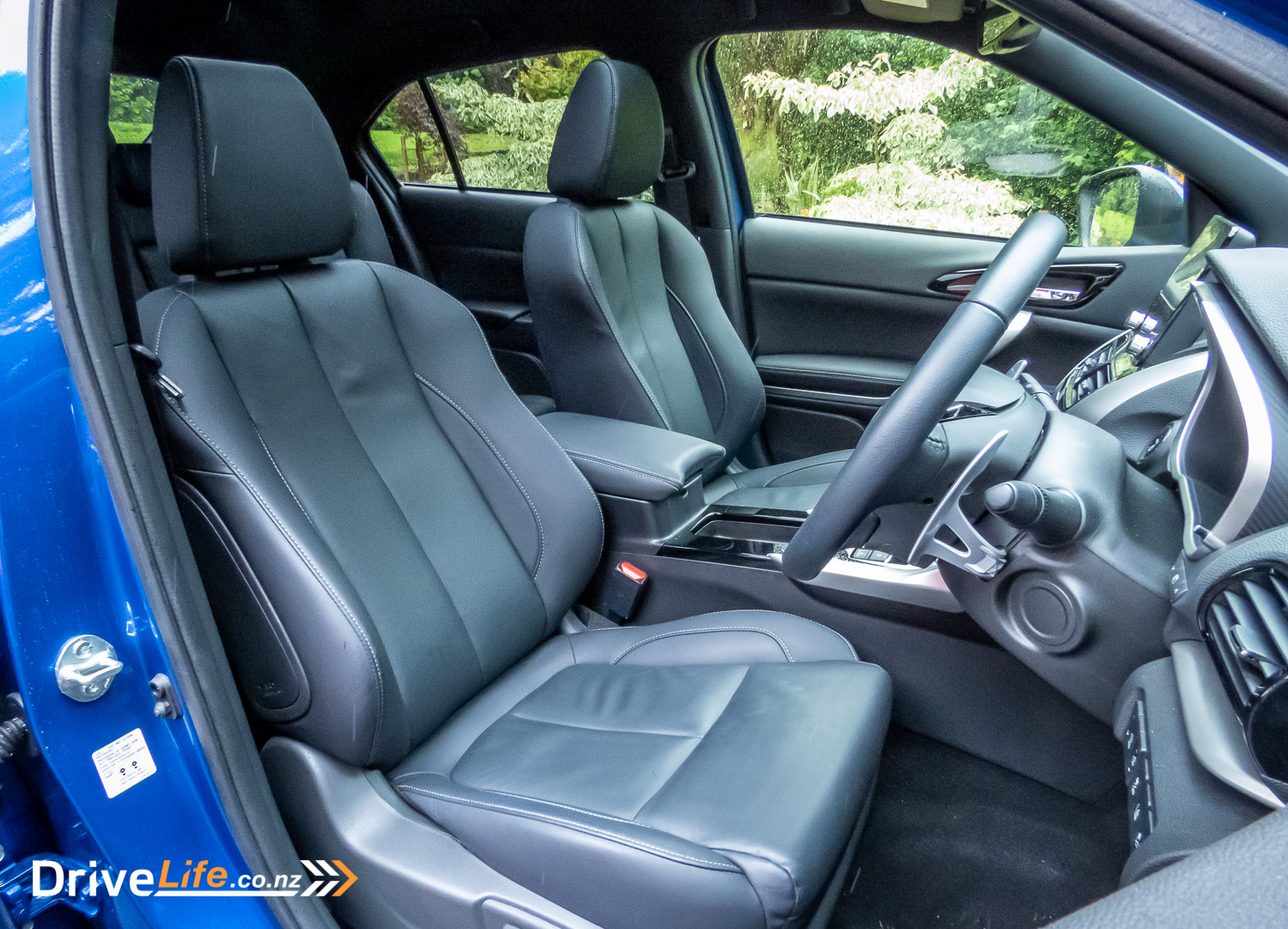
My favourite part of the Eclipse Cross’ interior is actually just sitting in it. These front seats are friendlier than an old sofa – I’d happily lounge in the Eclipse Cross for the sake of it. Both front seats are powered and heated, and in VRX models, Mitsubishi is also generous enough to throw seat heaters in the back too. Rear seating leg-room is surprisingly generous too, but anybody over 6-foot might struggle with headroom.

So, are there any noteworthy differences between the interior of the PHEV and other models? Yes, actually.
Two items inside the interior stick out, namely the gear-stick and the dash cluster.

Starting with the gear stick, PHEV models get a peculiar-looking gearstick. It reminds me of a hitchhiker’s thumb. Although there’s nothing inherently wrong with it, I dislike that the ‘park’ is not actually part of the gear stick. To put the vehicle in park, you need to awkwardly reach in front of the gearstick and hit a big button marked ‘P’. I can’t say I ever got comfortable with this gesture.
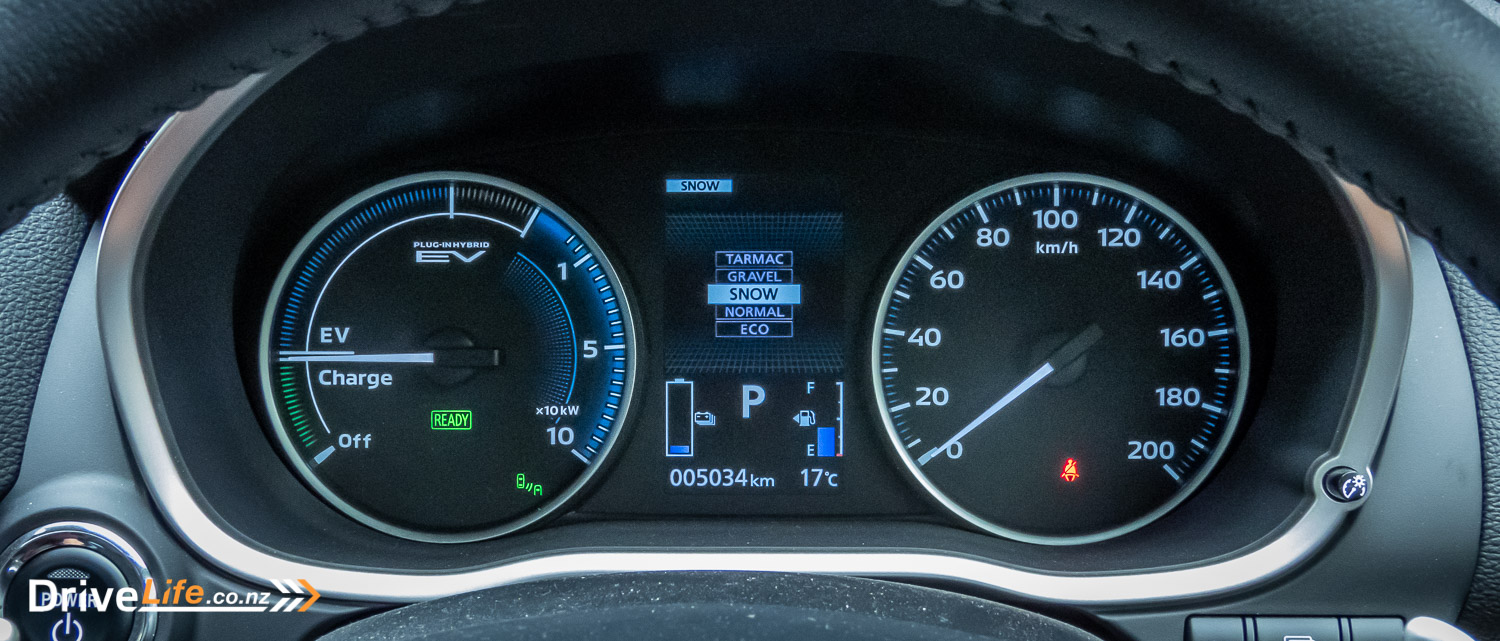
The second item of difference is the revamped dash cluster design. The PHEV gets a unique RPM gauge, which combines the internal combustion engine revolutions, the power generated from the electric motors, and the regenerative braking. Although this sounds like lots of information, it’s easy to understand once you’ve seen it in action.
Mitsubishi hasn’t addressed our minor annoyance with the fuel economy data, which auto resets after each drive. If you want proper fuel consumption history, you’ll find it hiding in the centre infotainment.

The third major addition you won’t find inside the car. Instead, you’ll find it on the app-store.
Mitsubishi has developed an app, which supports some of the electrified functions of the vehicle. You can use it to set scheduled charging times, and pre-condition the climate controls, so it’s just right before you’ve jumped in the car. There are a few other tricks in there too, which allows you to fiddle with the exterior lights, amongst others.
Overall, the interior of the Eclipse Cross PHEV might lack the wow-factor of higher tech interiors, but Mitsubishi’s approach has ensured it’s reliable, understandable and accessible to many. Although I can’t fault it in any major way, one problem it’ll face comes from Mitsubishi’s own range. We’ve recently had the new Outlander on test. The interior of the new Outlander is a massive step-up for Mitsubishi. By comparison, the Eclipse Cross seems stuck in the old days.

What’s The 2022 Mitsubishi Eclipse Cross VRX PHEV Like To Drive?
Although one can point the finger at the Eclipse Cross for having a relatively low-tech interior, no such allegations would stick when discussing the Eclipse Cross PHEV’s high-tech drivetrain.
Underneath, it’s essentially the same drivetrain found in the Outlander PHEV. Mitsubishi has been producing the Outlander PHEV since 2013, meaning there’s at least ten years of real-world testing behind it, which should bode well for its reliability.

For those that do not fully grasp the concept, the Eclipse Cross PHEV effectively has two engines – one is a standard internal combustion engine and the other is a pair of electric motors. Both engines can operate independently, or on a mixed cycle, working to each engine’s strengths. For the engine running on exploding dinosaur juice, the Eclipse Cross features Mitsubishi’s proven 2.4L MIVEC 4-cylinder petrol engine, producing 94kW of power and 199Nm of torque alone. On the electrified side are two electric motors, paired with a 13kWh battery. Altogether, the combined power output means the PHEV is good for 130kW of power.
Although 130kW of power isn’t exactly going to snap your neck backwards, there’s still a modest thrust from the electric motors from a stand-still. On the whole, the all-round performance is not too dissimilar from its petrol siblings. Power delivery is robust down low and middle range, when the car is operating on a blend of electricity and the petrol engine. It’ll only start to run-out of breath when you start making demands from the petrol engine in higher-rpms.
Of course, you shouldn’t be looking at the Eclipse Cross if your objective is to win quarter mile traffic light sprints. Instead, the objective of the Eclipse Cross is to cover many miles, with utmost efficiency.
Mitsubishi has done a great job with the optimisation of the electric and petrol motors. It’s heavily biased towards the electric motors for the majority of speeds below running on the motorway. That’s to say, if you’re only popping off to the shop for some milk, you’ll be running almost entirely on the battery.
The only time you’ll hear the petrol engine kick in is if you demand performance by pushing the accelerator to the floor, or if you’re low on charge. Of course, you can also lock the car into EV mode using the button next to the gearstick.
You can monitor the energy split from the dashboard too. During our test, the Eclipse Cross drove on the electric motors 71% of the time. This was especially surprising, given the amount of motorway miles we do. By my rough estimate, the petrol engine was only running when cruising above 70kph on the motorway. Getting up to speed was done nearly entirely on electricity.
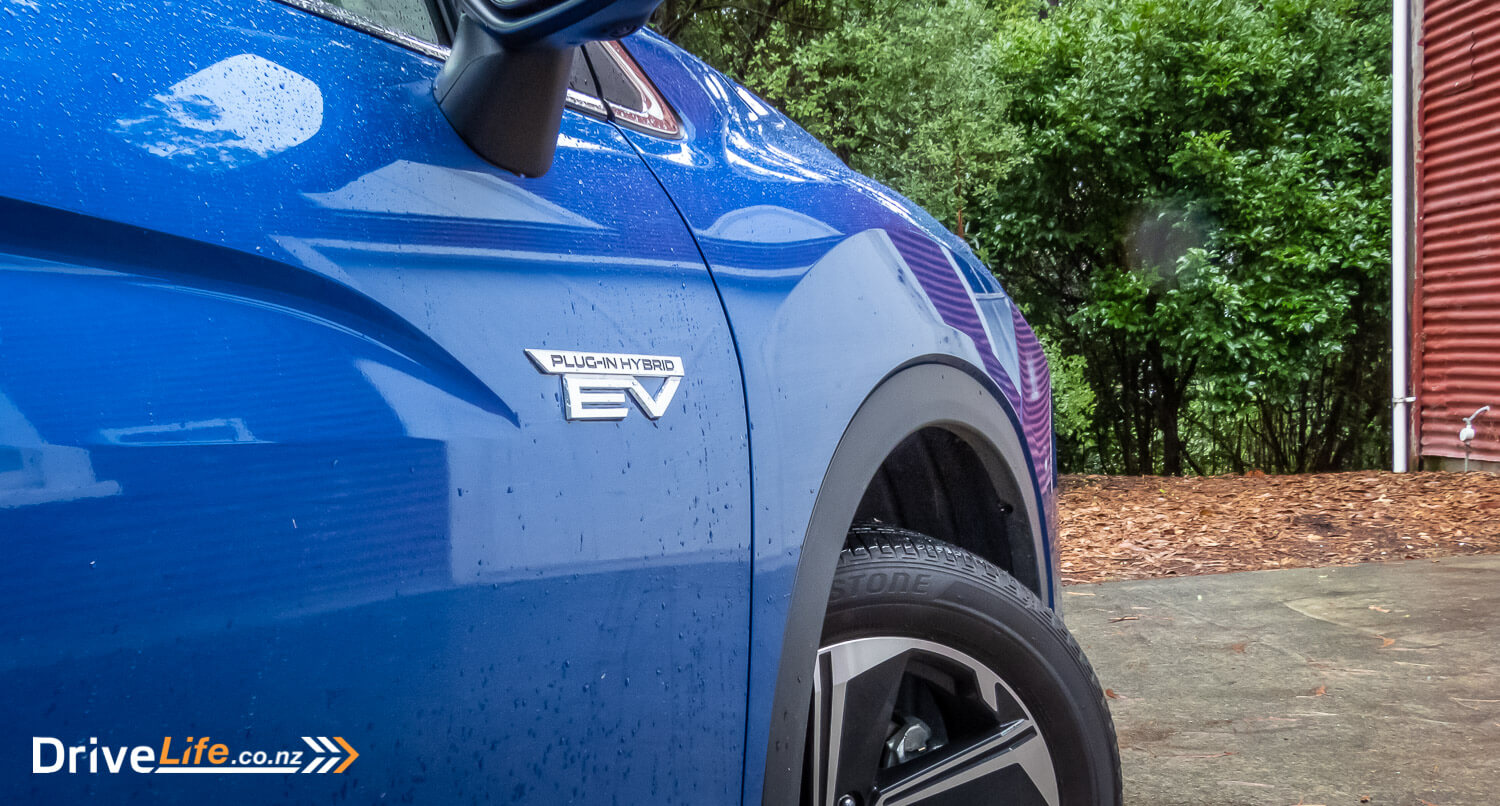
Overall, our average fuel consumption result during our test was 3.7L/100km, which is above Mitsubishi’s claimed fuel consumption figure is 1.9L/100km. If we did more urban miles during our test, getting closer to that figure wouldn’t come as a surprise. However, where the Eclipse Cross isn’t the most efficient is when you’re running on the petrol engine alone. Drain the battery and jump on the motorway, you’ll unsurprisingly increase the fuel consumption. However, I didn’t expect it to increase by as much as it did. Our worst result was 8.7L/100kms under these circumstances.
Although, don’t get the impression that the Eclipse Cross will start guzzling fuel if you run out of charge whilst on a long road-trip. Down next to the gearstick near the EV button is another button called ‘Save Charge’. Press this button, and the car will start favoring the petrol engine. In doing so, it gives the batteries an opportunity to recharge, so you’ll be able to arrive in the next town with juice in the battery.
The Eclipse Cross also has five levels of regenerative braking which are switchable via the steering column mounted paddles. All modes are quite light on resistance, meaning the Eclipse Cross is not a true one pedal car, like you’d get with some EV’s. That said, there are plenty of EV’s that don’t even allow you to adjust the regenerative braking as much as this Eclipse Cross did. Either way, I appreciate Mitsubishi included this – I got plenty of use from the regen adjustment during our test.
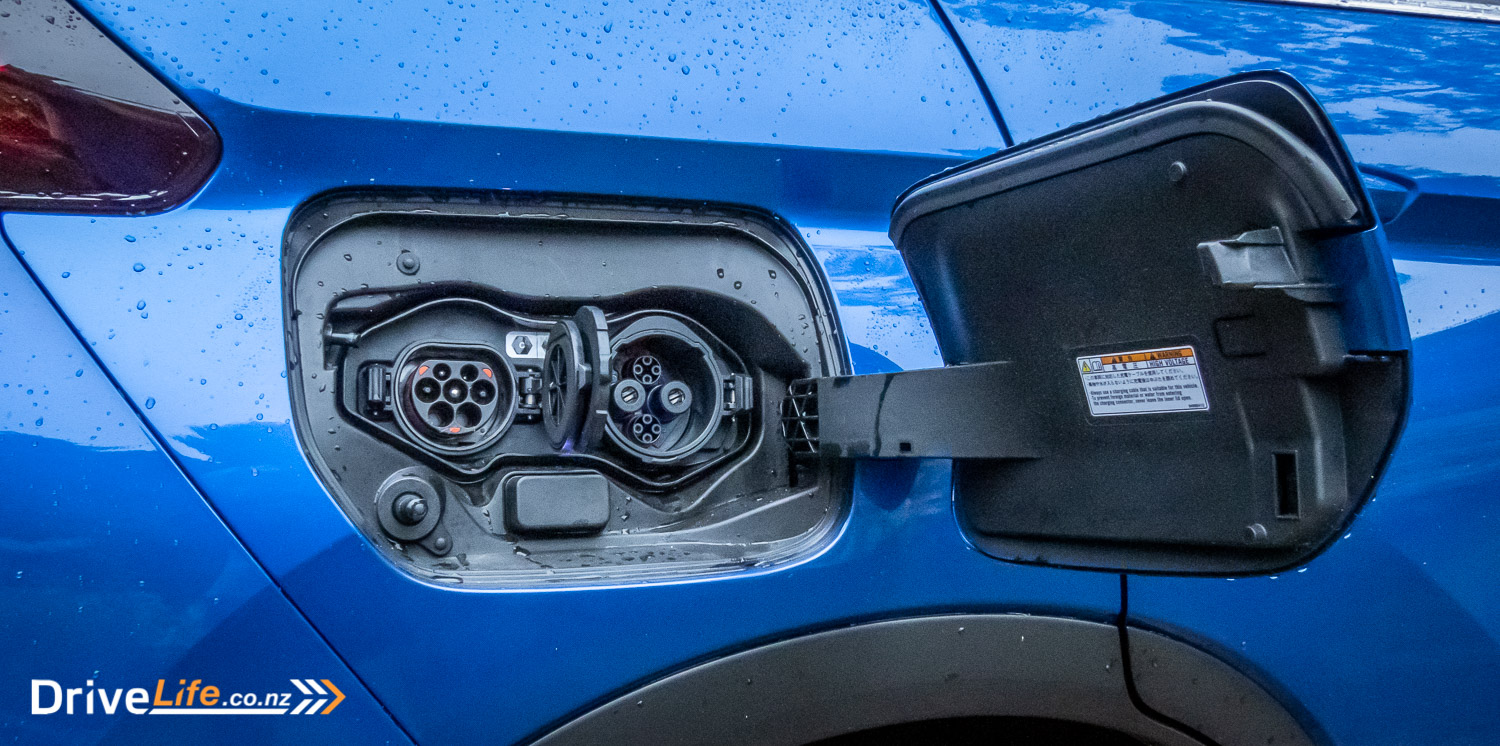
On the subject of charging, the Eclipse Cross now features a Type 2 AC (home charging) port, compared with the previous Type 1 in the Outlander. The Type 2 port is the format commonly used by most EV’s in the marketplace these days.
Charging a flat battery from a wall socket (3.7kW) will take approximately 7 hours, or if you’ve got a Wallbox device or something similar (7.2kW), it’ll take closer to 4 hours. Using public fast charging will take around 25 minutes from 0-80%. This might sound a little bit slow, and that’s because it is. The Eclipse Cross has a 22kW charging capacity, meaning you will not be able to utilise the full charge speed from a 50kW chargenet charger.

I’m sure you might be asking – well, if three quarters of the driving is going to be electric, why just not make the whole thing an EV?
This is a valid question. Although if you’re reading this, I suspect you may already have answered that yourself. No matter the reason, the shortest answer is that EV’s still are an emerging technology, and there’s still some major impediments to their widespread adoption. A PHEV, on the other hand, gives you the best of both technologies. You can have a vehicle that’s eco-friendly for the majority of your driving, without the traditional EV compromises.
The Eclipse Cross is therefore a good solution for the eco-conscious, today. It’s the perfect one-car vehicle for the garage. It’s also not astronomically priced either, meaning it’s attainable for many Kiwi households.
Although the focus of many buyers will be on its eco-credentials, another area where the Eclipse Cross will impress is with its ride quality. Mitsubishi has clearly prioritised this with the Eclipse Cross range. The suspension appears to have a softer spring set-up, which will glide over small bumps and undulations on New Zealand’s varied road surfaces with ease. The cabin is also well insulated from road noise too.

Due to the comfort bias, the Eclipse Cross’ handling isn’t anything to write home about. The body does roll through faster corners, although Mitsubishi’s all-wheel drive system (which they call Super All Wheel Control), does a good job managing the chassis composure, ensuring that you aren’t up for any surprises.
The Eclipse Cross PHEV also has five different driving modes, which are Normal, Eco, Tarmac, Gravel and Snow. Tarmac is effectively your sport mode, which adjusts the throttle sensitivity. Gravel and Snow modes utilise an active limited-slip differential, which can send power to the wheel with more grip on slippery surfaces. This will allow the Eclipse Cross to tackle some light off-roading. Although, 99% of the time, you’ll be spending your time in Eco or Normal mode.
Like every vehicle in 2022, the Eclipse Cross comes with plenty of safety kit as standard. Our VRX spec model has adaptive cruise control, which the XLS model variants miss-out on. Personally, I’d recommend the VRX purely for this reason. However, neither model offers lane-centring assistance. Although you would likely find this on some competitors of the Eclipse Cross’, seldom does the system ever work flawlessly. If anything, it didn’t bother me that the Mitsubishi didn’t have this on-board.
Otherwise, there are only two annoyances of the Eclipse Cross’ PHEV on-board safety gear. Firstly, the forward collision warning is a tad sensitive. Driving down many of Wellington’s narrow roads would often trigger it, which would generate a few loud beeps and prompt you to BRAKE!
The second is regarding the button for the auto hi-beams. You need to press it each time you start the car, because it will switch-off by default. Kinda defeats the purpose of “auto hi-beams”, if you ask me
Fred’s Perspective
I reviewed the last Outlander PHEV, and thoroughly enjoyed that car. The Eclipse is more of the same – a nice drive, well-executed PHEV system, well-appointed, and well-priced but in a smaller body. I can see that appealing to a lot of buyers.
The Eclipse PHEV and I fell into an easy routine; commute, come home, plug in. All too easy, and there was barely a thought that it wasn’t a ‘normal’ car. I didn’t bother using any of the drive modes, or the EV modes, I just let the car get on with it. That was the same experience I had with the Outlander PHEV, and in this respect, Mitsubishi has really nailed the ease of driving.
If I was being picky, the resolution of the infotainment screen was from the early 2000s, and the heated seat buttons are still from a 1982 Galant (when will they ever run out of stock of those buttons?!) but otherwise, this was a PHEV that was a joy to drive.
Add on top that it’s quite a bit cheaper than the Ford Escape PHEV, and you should have a bit of runaway success in the medium-SUV PHEV market.
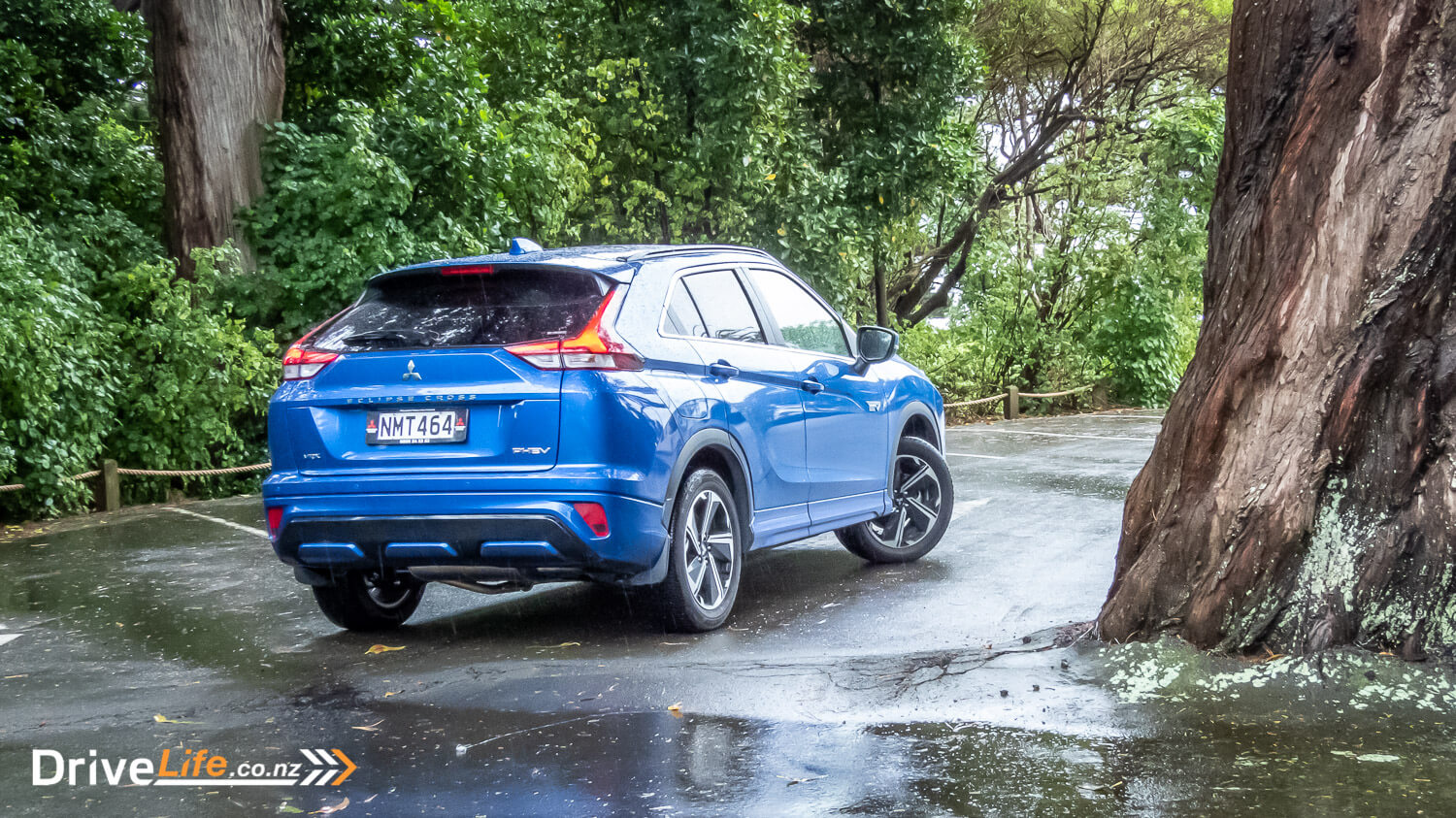
2022 Mitsubishi Eclipse Cross VRX PHEV Specifications
| Vehicle Type | Hybrid Compact SUV |
| Starting Price | $57,990 |
| Price as Tested | $57,990 |
| Engine | 2.4L 4-cylinder MIVEC petrol engine |
| Electric Motors | Two Permanent Magnet Synchronous electric motors |
| Battery Size | 13kWh plug-in battery |
| Power, Torque kW/Nm | 94kW@4,500rpm 199Nm@4,500rpm |
| Transmission | Transaxle Type – Twin Motor 4WD with Optional Petrol Engine Engagement (Parallel Hybrid Mode + Series Hybrid Mode + EV Mode) |
| Electric Range | Up to 55kms |
| Spare Wheel | Puncture kit |
| Kerb Weight, Kg | 1,895 |
| Length x Width x Height, mm | 4545 x 1805 x 1685 |
| Cargo Capacity, litres | 359 (all seats up) 626 (second row down) |
| Fuel capacity, litres | 45 |
| Fuel Type | Petrol (91 or higher) |
| Fuel Efficiency | Advertised Spec – combined – 1.9L/100km Real World Test – combined – 3.7L/100km Low Usage: 0-6 / Medium Usage 6-12 / High Usage 12+ |
| Towing Capacity Kg, unbraked/braked | 750/1500 |
| Turning circle, metres | 10.8 Small: 6-10m / Medium 10-12m / Large 12m+ |
| Warranty | Diamond Advantage Warranty 5-year, 130,000Km New Vehicle warranty 10-year, 160,000Km Powertrain Warranty 8-year, 160,000Km Battery Warranty |
| ANCAP Safety Ratings | ANCAP Rating – 5 stars Rightcar.govt.nz – 5 stars – NMT464 |




